
-
@rsquires I took a look at your 'moon' test scene you sent me. Im a little perplexed to your noise problems - its not that bad! What ISO were you using?
Here's the streameye results;-
First pic is the IDR reference frame 1 (at min/max QP of 16); second pic is at frame number 62, the QP has come down to a min/max of 14/17 (most picture is coded at QP14), 3rd pic shows the macroblock size in bits in the pot is around 800 avg.
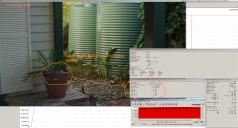
 moontest1.png1845 x 994 - 2M
moontest1.png1845 x 994 - 2M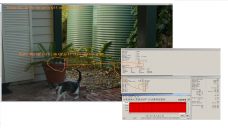
 moontest2.png1920 x 1080 - 2M
moontest2.png1920 x 1080 - 2M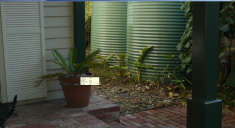
 rsquiresmoontest3.png2553 x 1391 - 3M
rsquiresmoontest3.png2553 x 1391 - 3M -
@driftwood Since the begining of hack you are doing a hard work developing your setttings. Until today I did not experiment it. I am just using a basic 48Mbps GOP3.
I would like to know if there is a patch which could decrease the amount of chroma noise in high iso, or if it is impossible to do due to be a sensor issue.
-
@apefos From what I have seen until now matrix and compression settings can have influence onto noise reproduction. But while @driftwood seem to work towards less videoish chroma noize and more film like grain one should not judge settings to much from looking onto noise. You can turn in camera noise reduction to +2 and use a low bitrate setting and you will get out clips with much less noise than high end settings. And indeed much less detail. If you aim for the best possible quality at higher ISO you want to preserve as much noise as possible. In post you can use much better denoisers than the one built into cam.
-
Long GOP 'DREWnet' can resolve higher i frames and very low Quant values (around 8-10 like the GH3's IPB Long GOP settings) using prediction to justify the fewer bits needed to resolve the same/better picture quality. It can be harder to edit/make cuts at the right place (nearest i frame has to be used).
Anyone one know if the approach to cutting long GOP is more or less standardized at this point? Or are there frame-accurate NLEs, and non-frame accurate NLEs, among systems which can natively edit long GOP?
Presumably, most systems would allow/require cuts to be made immediately preceding an I frame? So a 12 or 15 GOP structure would allow, at most, a cutting precision of about plus or minus 1/2 second for 24p material? That's a very imprecise cut....
-
@driftwood this shot wasn't the original one where I saw the problem. However it was enough for me to notice it. I think I had become so used to fine noise in under exposed areas that this seemed more blocky than usual. It was absolutely more muddy on the other shot where the area was considerably under exposed. I think my favourite is still Mysteron, but maybe I'm just confused. May also be that I am comparing this to GH3. Put this down to confusion. Thanks for looking into it though
-
Just wrapped a week of shooting with VK1/2/Moon (was updating as hack progressed) under pretty demanding conditions: -30 degree cold, panny lenses (7-14, 12-35, 100-300 -- three bodies because blowing snow made lens changes impossible). No problems whatsover in 24 or 720p60 modes. Footage looks amazing (first is 720, second is 1080). Spanned fine for two long interviews and no problem with tight or wide. Great work @driftwood. Thanks man!
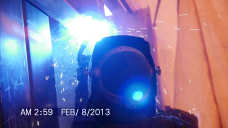
 00007_2013-02-09 9.16.35 AM.png1280 x 720 - 959K
00007_2013-02-09 9.16.35 AM.png1280 x 720 - 959K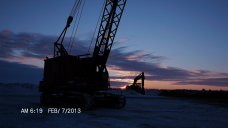
 00018_2013-02-07 10.38.10 PM.png1920 x 1080 - 3M
00018_2013-02-07 10.38.10 PM.png1920 x 1080 - 3M -
So a 12 or 15 GOP structure would allow, at most, a cutting precision of about plus or minus 1/2 second for 24p material? That's a very imprecise cut....
Time to transcode. There's no reason for anything but exactly frame accurate cutting in a NLE.
-
Any rough estimate about the recording time for Moon and Spizz on 64gb card? I know the bitrate varies from shot to shot but any rough estimate would help me decide which one to use on my next short? I'm assuming both have in-camera playback?
-
One of the reasons why the grain on Intravenus and Boom (and any earlier Driftwood settings) is very tight is we were using certain hi-end matrices to drive very fine quantisation levels - matrices like the cbrandin 444 stuff entered into the GH2's encoder proved difficult to spread the quantisation across the whole picture for hi-detail wide shots. ie the top part of the picture coded better than the bottom half. It worked great with in-tight/medium shots where detail is perhaps not at its greatest (hence the bitrate availability to fully exploit the matrix).
With Cluster X Series we are kind of using the rate control technology - as employed in the GH3 (just a hunch!) to drive the quantisation. Obviously, the GH3 has the choice of both 4x4 and 8x8 transform to efficiently code the picture at very low (best) QP using much less bitrate than a GH2 has to do the same job. On the GH2 I do this using the 'Quantisation for 1080' patch in ptools - which incidentally controls the minimum QP RC setting to code the picture to. Then one must match the bitrate settings, etc... (once the rate control is tested & measured) to achieve stability and equilibrium of what such a low QP requires.
I'm sorry if we're getting a bit too technical as Im trying to describe what's happening in the encoder. In order for the QP rate control to work one only needs a fairly safe looking/but highly balanced scaled matrix to provide the rate control a decent looking low-pass frequency (artefact free as possible) under the QP desired. I decided on this manner as more and more settings were using the good 'ol 'GOP Related' patch in ptools (see fig. below) to actually give less weight to the IPB frames by doubling or sometimes tripling frame & fields to harness the QP to bitrate balance (effectively destroying the pre-conceived scaling matrix). We've all been guilty of this! Nowadays, I prefer to try and keep the GOP Related stuff to mathematically correct proportions first and foremost and then, if need be, knock back on the prediction frames where necessary (see higher numbers in GOP Related patch in ptools to see what I mean) rather than the i frames - or better still - adjusting the matrix to match. Keeping GOP Related to its standard GOP size helps keep the bottom end high quality (maximises the bitrate). One must hit the balance on the nose if they can.
fig. The GOP Related patch in ptools should match (where possible) the correct amount of i frames, P frames/fields, and B frames of the GOP in question for not just top-end hi detail quantisation but to also offer great 'bottom-end' quality QP in the lower detailed/moving scenes;-
- Top (Odd) i frame, Top (Odd) P f/field, Bottom (Even) P f/field, Bottom (Even) i frame, Top (Odd) B frame, Bottom (Even) B frame
See attachment below showing you the fields of 1080i60
For example, 1080p24 Intra in 'moon' is 1,0,0,0,0,0 (GOP1) and 'Nebula' is 1,1,0,0,4,0. (GOP 6)
It is this balance which is taking me a long long time to maximise the cpu & memory of the GH2. However, in summary, if you look at DREWnet (12/15 GOP) latest trial and measure 1080p24 against the GH3's 50Mbps IPB .mov REC MODE you will see it is performing spectacularly as good or indeed better in certain scenarios - albeit with the need for hi bitrates to drive a low QP rate control (remember we haven't got the memory saving facility of Hi Profile Level 5 and 8x8 transform on the GH2).
All in all, Cluster X Series settings are doing their damnedest to bring you the finest quality for all GOPs yet seen on the GH2. And we're still adjusting - hence the trials before we 'release candidate' them. Please continue to try them out and tell me what you think.
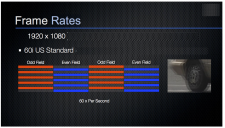
 60i frame rate showing fields.png1242 x 705 - 2M
60i frame rate showing fields.png1242 x 705 - 2M -
in three days I tried all the hack on my GX-1
Only these two is stable on my GX-1 : Driftwood 'Gala~X~ian' . setj :Nebula 6 GOP Trial 5b.
in my opinion "Nebula 6 GOP Trial 5b" looks better.
-
Dont worry @slovach I'll be offering you the best out of the AVCHD modes in the GX1 early next week. Thanks for trying out all the Clusters - I'm glad you like Nebula.
-
@JDN I was wondering if you could please share your camera settings you used in those two shots (and ISO if you recall). After many years and thousands of hours shooting with the 5D I'm a baby with this incredible little camera and these patches are making me very happy. Thank you all.
-
@Aashay I was getting 1-2 minutes per gig with VK/moon, just depending on the subject -- static medium tight intvs for instance, would easily crack 8 minutes, sometimes more, while wider more diverse shot and/or shots with movement, much closer to IV record times.
@puttydivision, if I recall, both shots were on the 12-35 at f2.8, 160 iso because of light (one in a tent at 1/125 for 720, the other at sunset). The one in the tent may have also had a holly wood black magic 1/8 filter on it, more to protect the glass from sparks than for effect, but effect of those filters is always nice anyway.
Nice thing about all panny glass, despite their drawbacks, is that they are totally sharp wide open. IS on 12-35 works really great too I have to say -- takes out most shake on handheld and controlled walking.
-
@driftwood Tested Moon Trial 3 on 24P. No problems. Even tested a 10 minute spanning shot. Worked perfectly.
-
Spizz which was tuned by me for the improvement in stability is due to be released soon. :-)
-
@driftwood Are the new Cluster X settings, like the new Drewnet, also aimed at using on the gf2/gf3 or are they strictly for the GH2?
-
@RnR01 Try them and let me know. 1080i and 720p modes could very well work.
-
@Kellar42 they have processed the material natively - and not raped 5D2RGB with this, then it would be better
-
@Butt what? You think quality would have been higher straight into FCPX and not through 5D2RGB? I'm very happy with the ProRes version, vimeo chokes a bit on the film grain and grade which may be what you don't like. It's close, but 5D2RGB is delivering a better transcode to ProRes than Final Cut right now, to my eyes.
-
@driftwood Thank you so much! Cluster X Moon Trail 3 is a good patch. but noise is little bit higher from ISO 500 itself. detail wise its soft and lacks sharpness in edges if compared with previous patches like Sedna A, Quantum v9b, etc.few months ago i released a set of videos from same spot using Quantum v9b, which is in youtube "a day at the vandalur zoo". we could visibly see the details and sharpness is less throughout the frame.awesome grading improvement from this patch which is superb. Cluster X is soft and smooth all over which i felt cool about this patch. i will wait for final release of cluster X. i am still a Canis, Sedna A, and Quantum V9b Lover. A feature request, can Cluster x Moon get cross fired with Sedna A or Quantum V9b?? or is there any possibility that Top Notch patch user like me will get a super detailed patch from this new breed of matrix and improvement?? I support and tested "Cluster X Moon Trail 3" - which is for Top Grading, Smooth and Soft Video Capture.
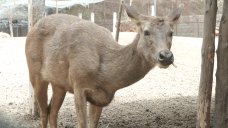
 vlcsnap-2013-02-11-19h39m04s179.png1920 x 1080 - 4M
vlcsnap-2013-02-11-19h39m04s179.png1920 x 1080 - 4M
 vlcsnap-2013-02-11-19h47m23s79.png1920 x 1080 - 5M
vlcsnap-2013-02-11-19h47m23s79.png1920 x 1080 - 5M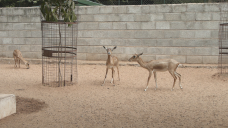
 vlcsnap-2013-02-11-19h42m22s131.png1920 x 1080 - 4M
vlcsnap-2013-02-11-19h42m22s131.png1920 x 1080 - 4M
 vlcsnap-2013-02-11-19h47m40s236.png1920 x 1080 - 5M
vlcsnap-2013-02-11-19h47m40s236.png1920 x 1080 - 5M -
@JDN Where do you live, where the temperature is below 30 degrees? Just even here, where I live, in the cold of Siberia, the day temperature not lower than 24 degrees Celsius.
-
Time to transcode. There's no reason for anything but exactly frame accurate cutting in a NLE.
On second thought, this can't be right: consider that NLEs offer non-destructive editing. The systems should be able to continue decoding the original footage to produce accurate cuts, regardless of where they occur. Same would be true when you export a time-line. It bears more investigation, but systems capable of editing AVCHD natively must be offering frame-accurate editing, otherwise they'd be useless.
-
sorry if I missed the post, does moon perform better with HBR or 24. It's my fault for not remembering which I shot in because I was testing a little bit of everything last night, but I'm sure HBR footage ended up the lesser.
-
@jrd that's my thinking too but these processor intensive modern codecs, it wouldn't surprise me if an app had issues due to all the variations that might not be predictable by the dev. I don't think I ever used CS5.5 but see a marked difference between AVCHD performance in CS4 and CS6 (which is what I'm using now) and I haven't changed systems in that time. It was impossible to use the camera raw h.264 files from the 7D to edit Sick Boy when we made it, now it's totally possible and the only change making it possible is newer software.
It wouldn't surprise me if there was some error in all the heavy lifting going on (like there is with the "digital rain"). At some point you gotta consider it might still be too early to consider this a codec appropriate for NLE, which it wasn't really designed to be.
-
Did a quick test today with Cluster X DREWnet Trial 5. Caused it to crash a few times in 24H on my 45mbps card, but all other modes seem pretty stable and it looks very nice.
Howdy, Stranger!
It looks like you're new here. If you want to get involved, click one of these buttons!
Categories
- Topics List23,990
- Blog5,725
- General and News1,353
- Hacks and Patches1,153
- ↳ Top Settings33
- ↳ Beginners256
- ↳ Archives402
- ↳ Hacks News and Development56
- Cameras2,367
- ↳ Panasonic995
- ↳ Canon118
- ↳ Sony156
- ↳ Nikon96
- ↳ Pentax and Samsung70
- ↳ Olympus and Fujifilm101
- ↳ Compacts and Camcorders300
- ↳ Smartphones for video97
- ↳ Pro Video Cameras191
- ↳ BlackMagic and other raw cameras116
- Skill1,960
- ↳ Business and distribution66
- ↳ Preparation, scripts and legal38
- ↳ Art149
- ↳ Import, Convert, Exporting291
- ↳ Editors191
- ↳ Effects and stunts115
- ↳ Color grading197
- ↳ Sound and Music280
- ↳ Lighting96
- ↳ Software and storage tips266
- Gear5,420
- ↳ Filters, Adapters, Matte boxes344
- ↳ Lenses1,582
- ↳ Follow focus and gears93
- ↳ Sound499
- ↳ Lighting gear314
- ↳ Camera movement230
- ↳ Gimbals and copters302
- ↳ Rigs and related stuff273
- ↳ Power solutions83
- ↳ Monitors and viewfinders340
- ↳ Tripods and fluid heads139
- ↳ Storage286
- ↳ Computers and studio gear560
- ↳ VR and 3D248
- Showcase1,859
- Marketplace2,834
- Offtopic1,319












